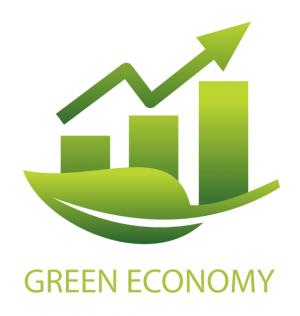Aichi 2005: The first Eco-Expo
Description
Source: Shanghai Manual: A Guide for Sustainable Urban Development in the 21st Century (2010)
Aichi 2005 was held from 25 March to 25 September 2005 in Nagoya, Aichi Prefecture of Japan attracting about 22 million visitors. The organizers had set out three key objectives to assess the success of their Expo:
1. Expo performance as a project. The metrics were comfort and safety, visitors'
satisfaction, and reaching a target number of visitors.
2. Sustainability as a model for Expos. To influence the resolution of global issues
by drawing international attention to the development of the Expo theme
"Nature's Wisdom" through high quality presentations.
3. Theme development to encourage new social behavior.
Its vision centered around the idea that each exhibition must have a modern theme corresponding to the expectations of contemporary society and that the theme should give ample scope for a presentation of state-of-the-art scientific, technological and economical progress made in the area chosen, while giving due consideration to the dichotomy existing between human and social aspirations on the one hand and the necessary protection of the natural environment on the other.
Visitors experienced some of the most advanced environmental technologies in the world, which were being tested at the Expo site. These included: biodegradable-plastic eating utensils used everywhere on the site at food concessions; a world-class greening wall (biolung) for suppressing the heat-island effect seen in urban areas; the intelligent multimode transit system (IMTS), which moved visitors within the Nagakute Area, and the fuel cell hybrid bus that linked the perimeter of the site.
Aichi 2005 put major efforts towards encouraging new social behaviour and systems, especially recycling. The venue was litter-free, volunteers were trained to separate trash into nine different categories and many people donated towards environmental causes.
By referring consistently to its environmental theme in the design and in the operations of the Expo, Aichi 2005 was able to greatly increase the impact of its message. Significant efforts were made to make citizens active drivers and supporters of new environmental behaviour and policy implementation. This was achieved by engaging society within the site and beyond through specific programmes and educational campaigns.
SDGS & Targets
Goal 8
Promote sustained, inclusive and sustainable economic growth, full and productive employment and decent work for all
8.1
8.1.1
Annual growth rate of real GDP per capita
8.2
Achieve higher levels of economic productivity through diversification, technological upgrading and innovation, including through a focus on high-value added and labour-intensive sectors
8.2.1
Annual growth rate of real GDP per employed person
8.3
Promote development-oriented policies that support productive activities, decent job creation, entrepreneurship, creativity and innovation, and encourage the formalization and growth of micro-, small- and medium-sized enterprises, including through access to financial services
8.3.1
Proportion of informal employment in total employment, by sector and sex
8.4
Improve progressively, through 2030, global resource efficiency in consumption and production and endeavour to decouple economic growth from environmental degradation, in accordance with the 10-Year Framework of Programmes on Sustainable Consumption and Production, with developed countries taking the lead
8.4.1
Material footprint, material footprint per capita, and material footprint per GDP
8.4.2
Domestic material consumption, domestic material consumption per capita, and domestic material consumption per GDP
8.5
8.5.1
Average hourly earnings of female and male employees, by occupation, age and persons with disabilities
8.5.2
Unemployment rate, by sex, age and persons with disabilities
8.6
8.6.1
Proportion of youth (aged 15-24 years) not in education, employment or training
8.7
Take immediate and effective measures to eradicate forced labour, end modern slavery and human trafficking and secure the prohibition and elimination of the worst forms of child labour, including recruitment and use of child soldiers, and by 2025 end child labour in all its forms
8.7.1
Proportion and number of children aged 5‑17 years engaged in child labour, by sex and age
8.8
Protect labour rights and promote safe and secure working environments for all workers, including migrant workers, in particular women migrants, and those in precarious employment
8.8.1
Fatal and non-fatal occupational injuries per 100,000 workers, by sex and migrant status
8.8.2
Level of national compliance with labour rights (freedom of association and collective bargaining) based on International Labour Organization (ILO) textual sources and national legislation, by sex and migrant status
8.9
By 2030, devise and implement policies to promote sustainable tourism that creates jobs and promotes local culture and products
8.9.1
Tourism direct GDP as a proportion of total GDP and in growth rate
8.10
Strengthen the capacity of domestic financial institutions to encourage and expand access to banking, insurance and financial services for all
8.10.1
(a) Number of commercial bank branches per 100,000 adults and (b) number of automated teller machines (ATMs) per 100,000 adults
8.10.2
Proportion of adults (15 years and older) with an account at a bank or other financial institution or with a mobile-money-service provider
8.a
8.a.1
Aid for Trade commitments and disbursements
8.b
By 2020, develop and operationalize a global strategy for youth employment and implement the Global Jobs Pact of the International Labour Organization
8.b.1
Existence of a developed and operationalized national strategy for youth employment, as a distinct strategy or as part of a national employment strategy
SDG 14 targets covered
Deliverables & Timeline
Resources mobilized
Partnership Progress
Feedback
Action Network


